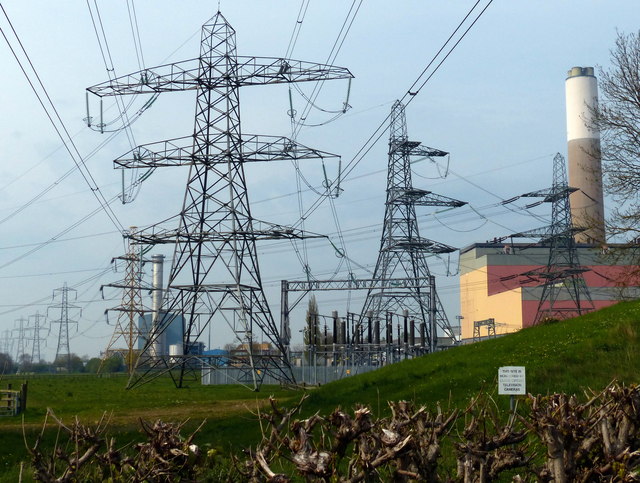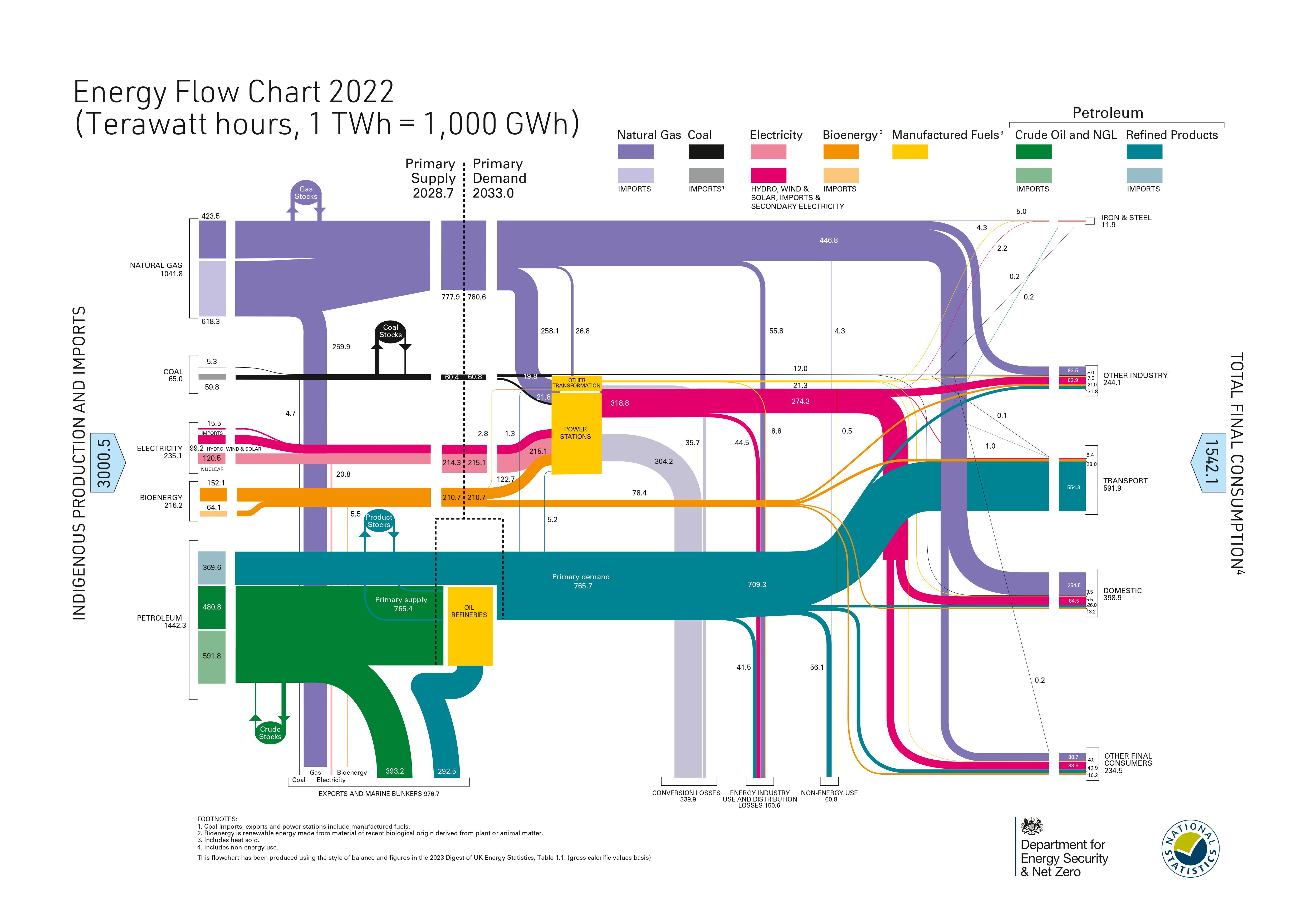 First and foremost the UK has several grids:
First and foremost the UK has several grids:
- The National Grid {Electricity Pylons and Infrastructure} Electricity is a Secondary Energy Medium
- The Gas Grid {Natural Gas - mostly methane, but other gases too in this "mix"} Natural GAS is a Primary Energy Source
- The Aviation Fuel and Oil Pipelines {as Refined Primary Energy Sources}
- Fibre Backbone - Communication and Control {including some of the above}
"National Gas Transmission is the backbone of Britain’s energy system today and we are working to play a leading role in the transition to a clean energy future that works for every home and business. We own and operate the national gas network, delivering energy to where it is needed in every part of the country."
"Gas is currently a critical part of Britain's energy needs. We keep households warm and underpin their quality of life. For business, we fuel growth and innovation, and we are looking to the future by developing the hydrogen transmission system of tomorrow." {more about the problems with Hydrogen Transmission - at the expense of Natural Gas - later}
But the Electricity Grid has a large % of electricity provided by the GAS GRID!
- "More clean energy for all: The Great Grid Upgrade will enable the electricity grid to carry more clean energy to communities in every part of England and Wales, helping us all reach net zero faster."
- "A grid that's fit for the future: As we continue to reduce our reliance on fossil fuels and increase clean energy generation, we’ll be using more electricity than ever. That means we’ll need a grid that’s able to carry all this extra electricity to wherever we might need it."
These are great marketing "messages" {or social massages} but not everything here makes logical sense! Now that "fossil fuels" have been discovered on Titan!
"Saturn's moon Titan has hundreds of times more liquid hydrocarbons than ALL THE KNOWN OIL AND NATURAL GAS RESERVES ON EARTH, according to new data from NASA's Cassini spacecraft." Source NASA 2008 So can we all dispense with the misnomer "Fossil Fuels" now?
So here lies the nub of the problem; DISINFORMATION - and predominantly from Governments and many agenda driven agencies.
So we need a coherent and INCLUSIVE energy strategy;
that includes generation/production/discovery {of primary energy}, distribution, Delivery and Efficient Technologies!
First Major Issue is the INEFFICIENCY of our {Mainly} CENTRALISED POWER GENERATION SYSTEM.
 See previous articles to understand where the energy 'liberated' at the {traditional Power Station {Gas, Oil, Coal} Net Zero; EV Infrastructure Needs; Live Generation Mix - {this needs to be viewed at various times of the day & night}; AT BEST ONLY 35-40% of the Heat energy from Gas. oil or coal is used the generate ELECTRICITY {similar to the USA too}
See previous articles to understand where the energy 'liberated' at the {traditional Power Station {Gas, Oil, Coal} Net Zero; EV Infrastructure Needs; Live Generation Mix - {this needs to be viewed at various times of the day & night}; AT BEST ONLY 35-40% of the Heat energy from Gas. oil or coal is used the generate ELECTRICITY {similar to the USA too}
So Centralised Power Generation is INEFFICIENT - therefore Expanding the Electricity Grid need to be considered within this context. So National Grid powered EVs and Heat Pumps can never be considered efficient and comparable with other sources of DECENTRALISED ENERGY GENERATION. Indeed many more householders must turn towards their own "Off-GRID" energy provision {Solar Thermal Panels, Solar PV Panels, Small Scale Wind {VAWT} and even Mini/Micro Hydro where applicable.
But the fakery of the current messages - and artificially inflated energy prices to the consumer must be challenged. We are all being taken as fools! The false gods of Climate change, CO2 reductions, 'Carbon Capture', Net Zero, Climate Emergency, Fossil Fuels and Just Stop must be cast out {of the church of logic}!! All this is simply {false} marketing-hype! in fact the cynicism is so bad, that they have truncated CO2 [Carbon Dioxide] to simply "Carbon" - which is you and I - is this a cull of the Human Race??.
In the USA the "penny is starting to drop" - This article on Zero Hedge is very much on point:
Electric Transmission Buildout Could Cost Americans Trillions Of Dollars
Tyler Durden's Photo
BY TYLER DURDEN
SATURDAY, MAR 16, 2024 - 10:40 PM
Authored by Bernard L. McNamee via RealClear Wire,
Though windmills and solar panels get the headlines, the big energy topic in Washington is electric transmission. Whether it is Congress’s newfound interest in permitting reform, the U.S. Department of Energy’s new Grid Deployment Office, or the Federal Energy Regulatory Commission’s (FERC) upcoming final rule on transmission planning and cost allocation, how to build and pay for long-range transmission to connect generators to customers is considered the final piece in the quest to meet net-zero goals.
Like so many issues in Washington, the need for more transmission lines is accepted without question and the costs are not considered. But for American consumers, especially low-income and elderly, as well as small businesses and energy intense manufacturers, building new transmission lines could result in much higher monthly bills and leave them on the hook for stranded assets.
Traditionally, high-voltage transmission lines, consisting of 150-foot lattice towers crossing the landscape for hundreds of miles, were planned for by local utilities to meet their customers’ energy needs and subject to approval by state public utility commissions. But public policy goals to promote renewables are changing how the grid is being developed.
Over the past few years, States established renewable energy mandates; Congress enacted over $1 trillion in taxpayer subsidies for renewable energy; and President Biden issued an executive order setting net-zero goals for electricity generation by 2035. To fulfill these policies, the grid needs new high-voltage transmission lines—lots of them—and they will be expensive.
According to the “Net-Zero America” analysis published by Princeton researchers, achieving net zero goals with 100% wind and solar by 2050 will require an additional $3.5 trillion in capital spending for new transmission lines. If net-zero goals are pursued with a mix of renewables, nuclear, and natural gas generation (which may include carbon capture), then a significant portion of this transmission investment would be unnecessary. Furthermore, a balanced resource mix of dispatchable and renewable resources would enhance grid reliability without overbuilding renewables or transmission.
Contributing to the cost is that renewable projects are often built far away from where the electricity will be consumed. For example, the Midwest is a great place to build windmills, but long-distance transmission lines are needed to deliver their electricity to big population centers on coasts. Not only are these lines capital intensive, but they also require purchasing or condemning private property to site them. Adding insult to injury, many of these transmission lines will not serve the people whose land is used.
Renewable power developers see the potential for selling their electricity in higher priced power systems near urban centers, while also being able to harvest generous taxpayer subsidies. But having to pay for transmission cuts into profits. Furthermore, property owners impacted by the transmission lines are objecting. The solution: a wave of lobbyists and special interests pressing policy makers to eliminate permitting barriers and to socialize the $3.5 trillion cost of building new transmission lines to more Americans.
In response, FERC is engaged in a rulemaking to change transmission planning and cost allocation. Among the proposals is requiring grid planners to consider factors like “geographic zones”, such as wind potential in the Midwest; state and federal “public policy goals”; and “trends” in technology. If adopted, these factors would provide more subjective ways to justify building big, expensive, long-range transmission projects that would be paid for by a broader number of Americans.
With public concerns about costs, transmission advocates now argue that more transmission is needed for grid reliability. Yet, the threat of blackouts is the result of the very net-zero policies that now require more transmission. For example, Maryland’s recent decision to shut down the Brandon Shores coal plant will cause customers across 12 states and the District of Columbia to pay $796 million for new transmission projects to support reliability.
Customers may also be left paying for transmission projects that are no longer needed. New technology, such as small modular nuclear reactors that can be built at existing power plants that already have transmission access, may negate the need for new transmission lines to serve renewable generators. The current push for transmission reform may be another expensive example of Washington trying to solve yesterday’s problem. This is not mere speculation, since 2008 customers have paid $250 million for the PATH transmission line that crossed three states, even though it was never built and never served customers.
It is time for policy makers to reaffirm that the electric grid exists to serve customers, not developers and investors. Transmission planning and cost allocation should be driven by the needs of customers and overseen by the state regulators who are best suited to protect their citizens. At a time when inflation is making its tougher from families and businesses to thrive, imposing additional costs for transmission buildouts for special interests makes little sense.
Bernard L. McNamee was a Commissioner on the Federal Energy Regulatory Commission from 2018-2020.
